While western Europe has been experiencing historically high temperatures, and the western US is in extreme drought, we have had a more-or-less normal summer. Much of June and early July was dry and hot and humid, but not unusually so; the high temperature recorded on our screened porch this summer was 95.5 F (35.3 C), in-range for the region and time of the year. The dry spell was broken by a brief storm this week which dropped three inches of rain in about half an hour. The garden is currently at its most lush and overgrown point in its annual cycle, and with 80 F (26.7 C) and 94% relative humidity this morning, it feels like we are in the tropics. In keeping with that impression, today’s six plants have a subtropical feeling to them.
1. Platanthera ciliaris (yellow fringed orchid)
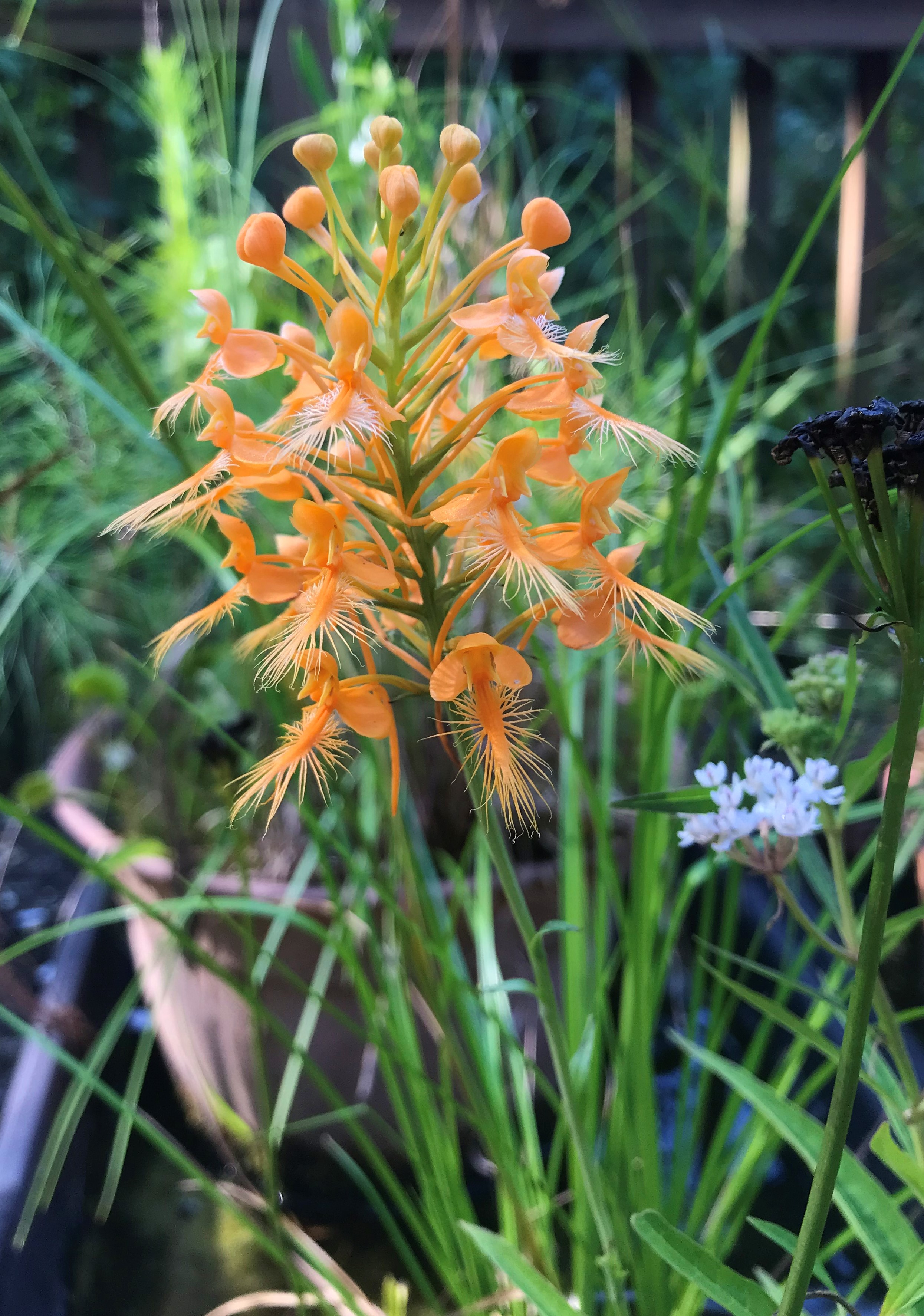
Platanthera ciliaris is an orchid that looks as though it should grow in the tropics, but it actually has a native range extending from Florida north to Michigan and New England. In North Carolina, it grows in the mountains, piedmont, and coastal plain. Its distribution in the piedmont seems to be spotty, and although I have seen it growing wild along country roads near the coast, I have never seen it here in central NC. This one is growing in one of my mini-bog planters, a large pot filled with peat, sand, and perlite which sits in a shallow tray of water. P. ciliaris seems relatively easy to grow in costantly damp, acidic soil as long as it is not over-fertilized.
2. Lychnis senno ‘Once in a Vermillion’
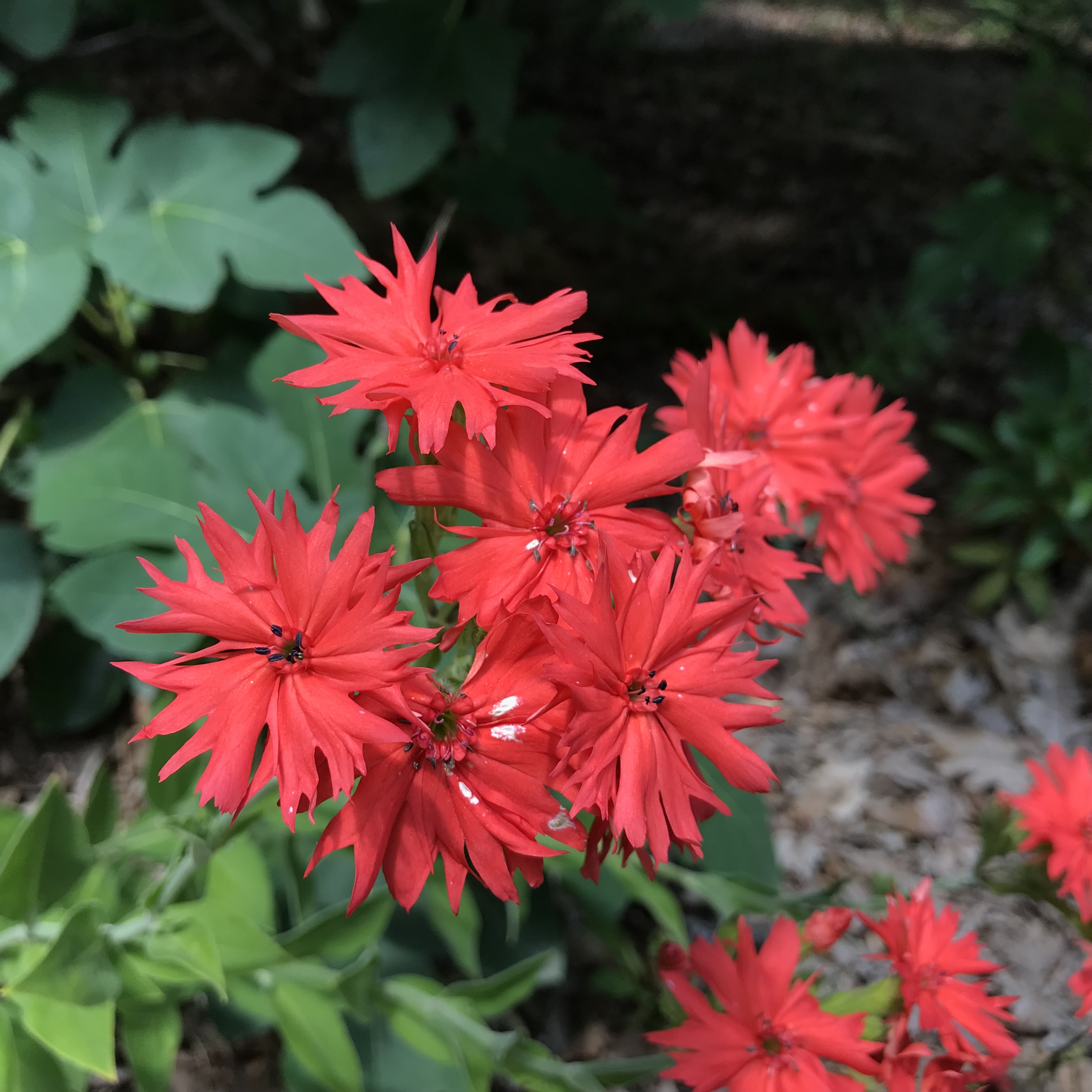
I wasn’t sure if this Japanese species would thrive in my garden, but in its second year it has more than doubled in size. It is growing on a dry, sandy slope made drier by the roots of a rapidly growing fig tree.
3. Crinum ‘Ellen Bosanquet’
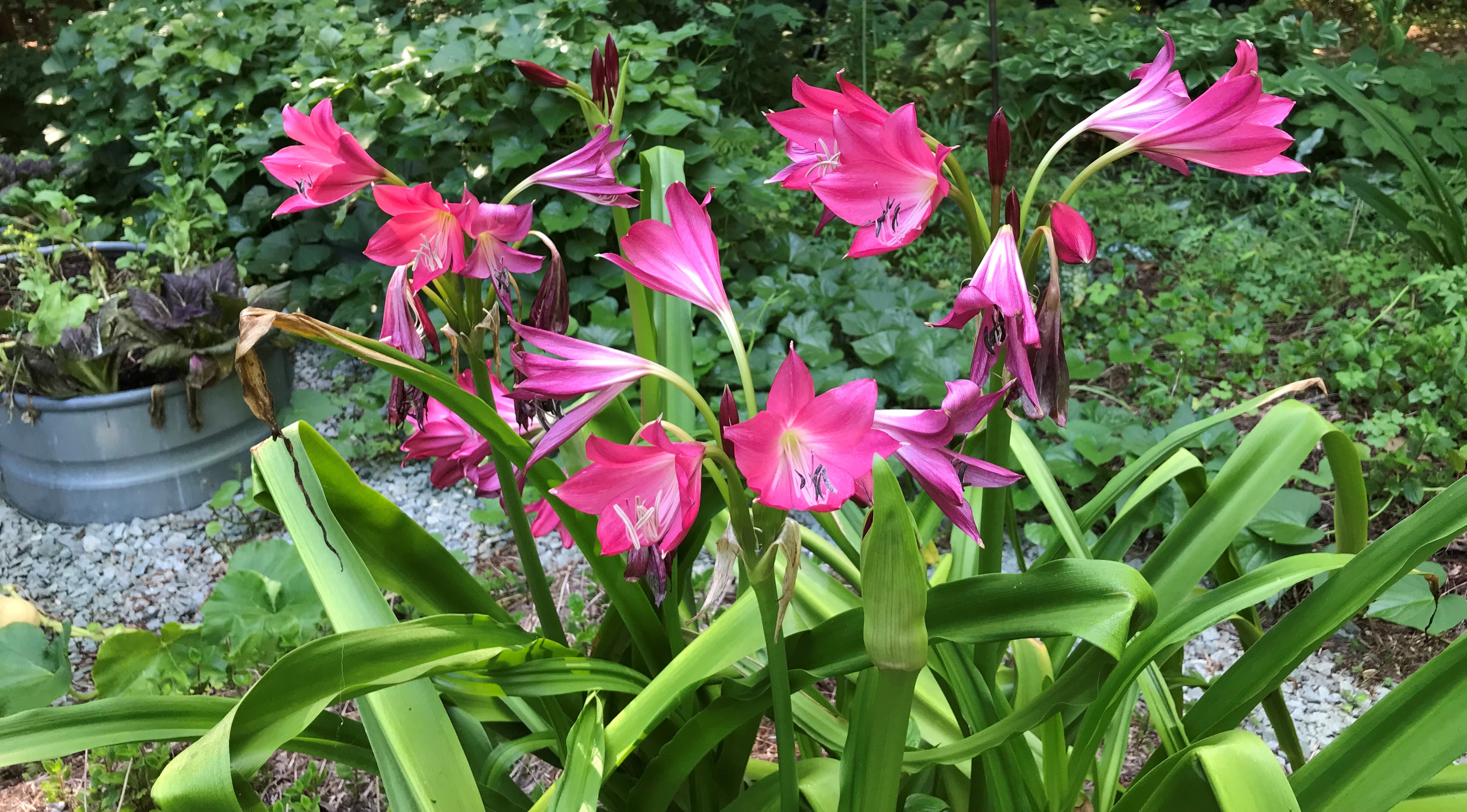
This classic Crinum hybrid is looking particularly good with six inflorescences this year.
4. Dionaea muscipula (Venus flytrap)
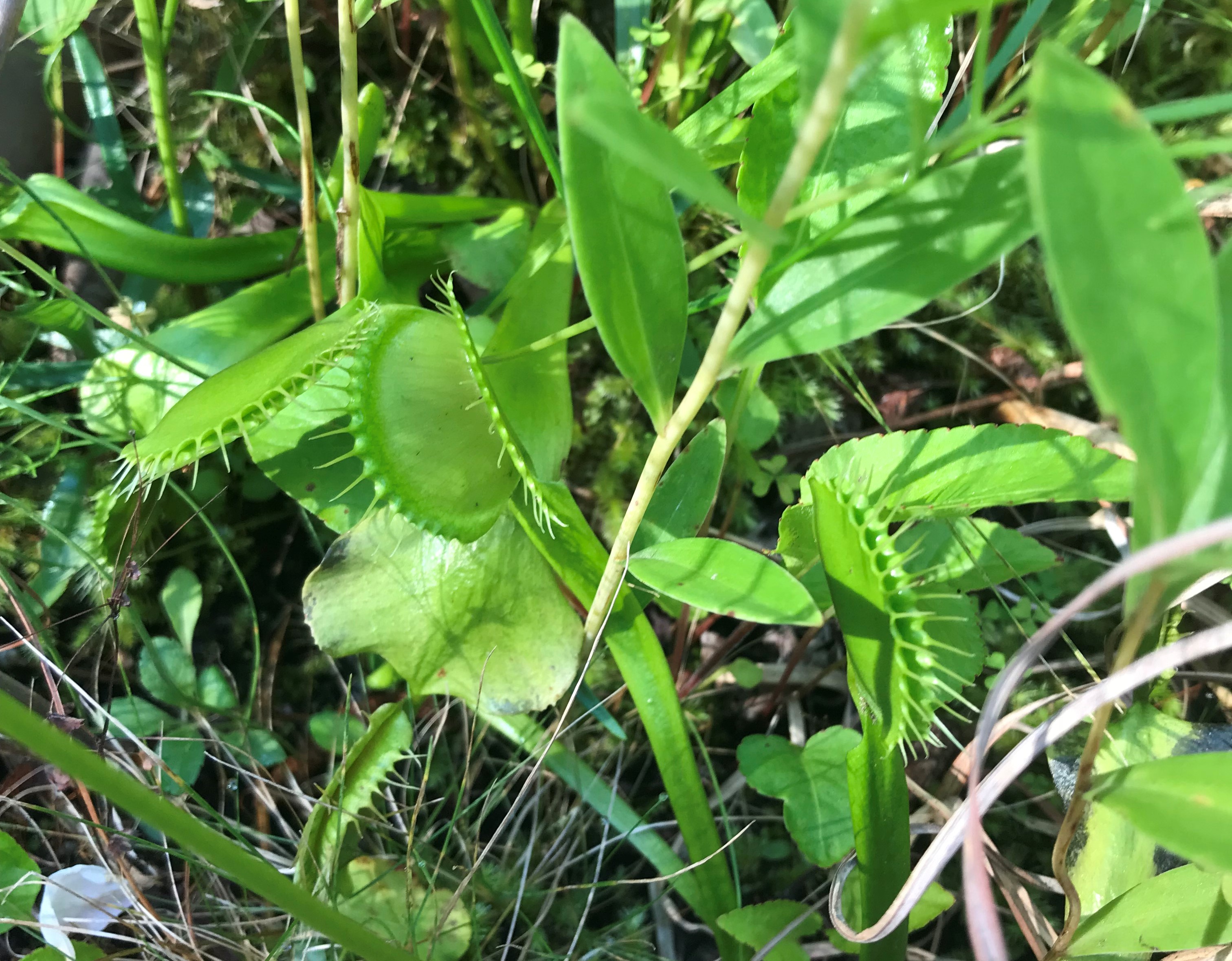
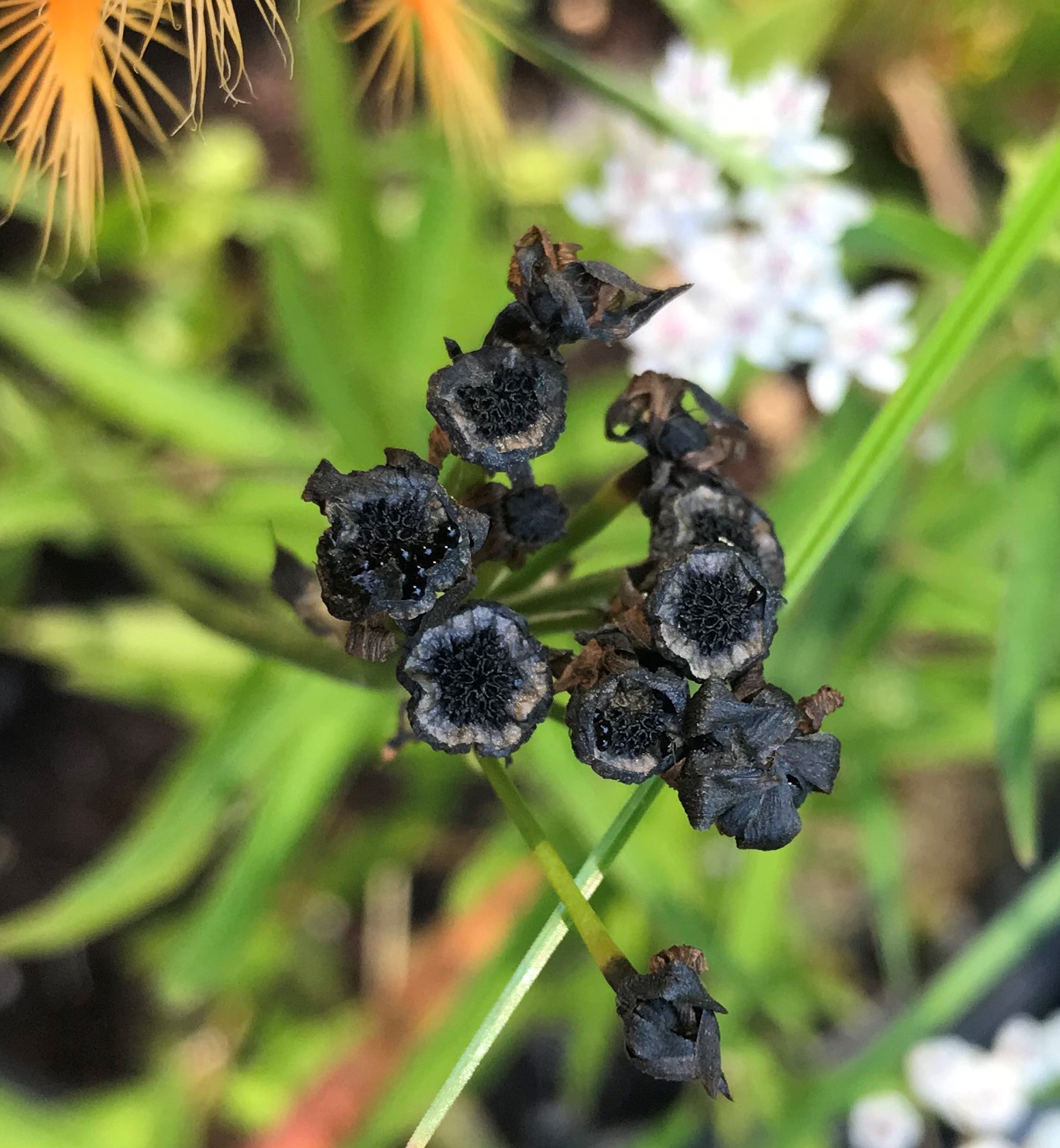
Another plant that looks as though it should be tropical, D. muscipula is actually native to a small region of coastal North and South Carolina centered around Wilmington, NC. These seed-grown plants in my mini-bogs are doing their best to increase their numbers by dropping seeds all over the place.
5. Eucomis ‘Glow Sticks’
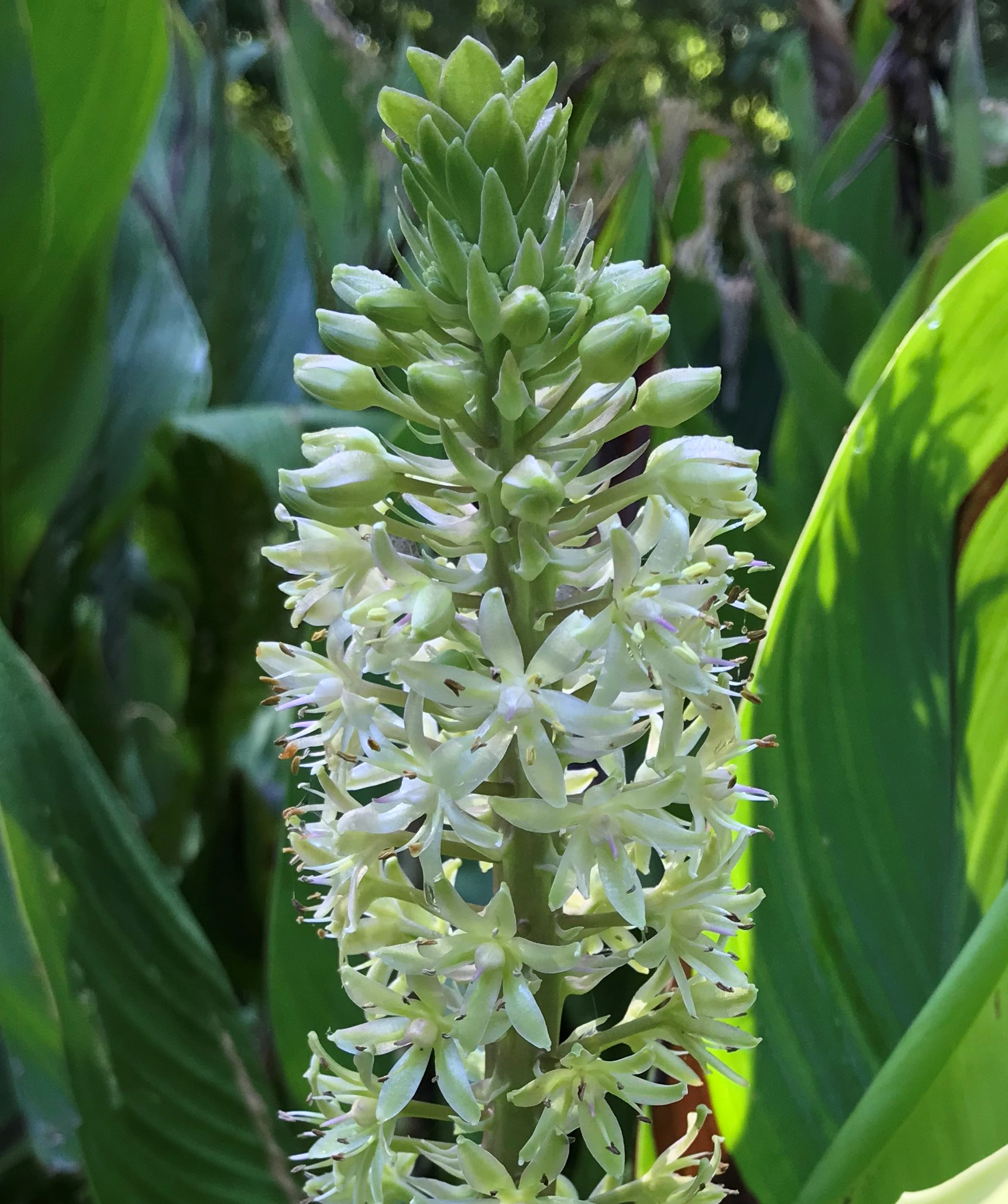
Eucomis ‘Glow Sticks’ is noted for its foliage which emerges golden yellow and matures to bright green. Its pale flowers attract our local bees.
6. Chlosyne necteis (silvery checkerspot) on Iris domestica
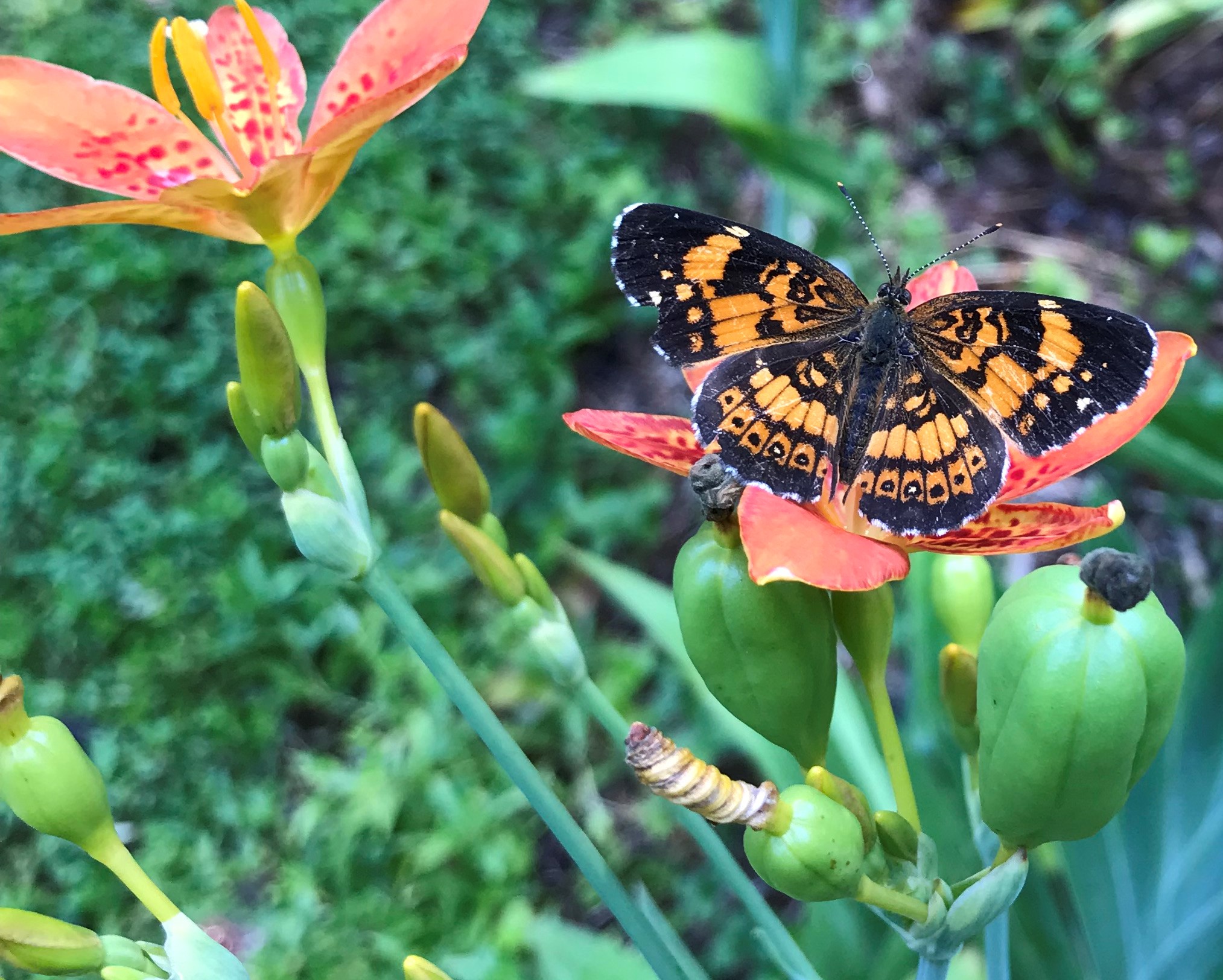
I haven’t seen many butterflies this year. Even our usual crop of pipevine swallowtail caterpillars is absent from the Aristolochia fimbriata, and there aren’t any black swallowtail caterpillars on the fennel. I hope it doesn’t have anything to do with our neighbors’ habit of outdoor spraying against mosquitoes.
Perhaps this little checkerspot is a sign of better things to come. In a few weeks the big clump of Silphium perfoliatum (photo 6) will be flowering, and it usually attracts large numbers of tiger swallowtails whose caterpillars feed on the surrounding trees.
The Propagator is the host of Six on Saturday. Head over there to see his Six for this week and find links to the blogs of other participants.

I have aristolochia fimbriata flowers but I don’t have these caterpillars here because it’s not a native plant and not in its natural space but in a pot.
I didn’t expect to see Venus flytrap seed pods !
Pretty flowers also of Platanthera ciliaris which is aptly named
LikeLiked by 1 person
It seems to me that some breeders invent cultivar names to intentionally embarrass those of us who grow them; such as ‘Pillow Party’ or ‘Brazen Hussy’. ‘Once in a Vermillion’ is cool though. It is clever and sounds appealing. Tangly Cottage Gardening gave me a Watsonia named ‘Coral and Hardy’, which is just as clever and appealing, and quite descriptive of a coral Watsonia that is hardy in harsher climates.
LikeLiked by 1 person
Oh I do hope that you get more butterflies. That Checkerspot is lovely though. Great photos, by the way, I can’t decide which is my favourite. Maybe the Lychnis senno the colour is wonderful.
LikeLiked by 1 person
I have never seen venus flytrap outside of those sad little ones being sold in garden centers that already look half dead. Very nice to see one growing outdoors and looking healthy!
LikeLiked by 2 people